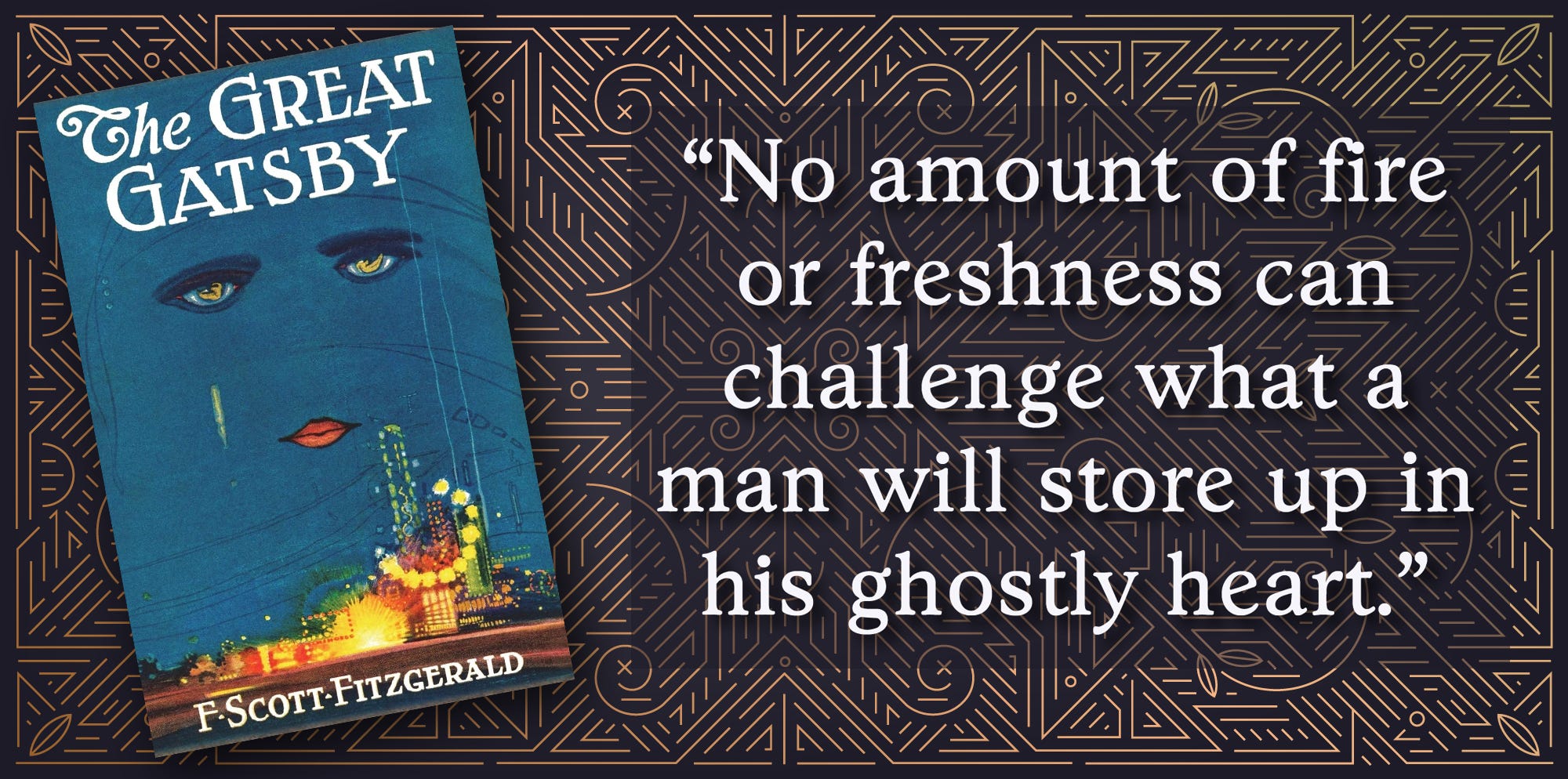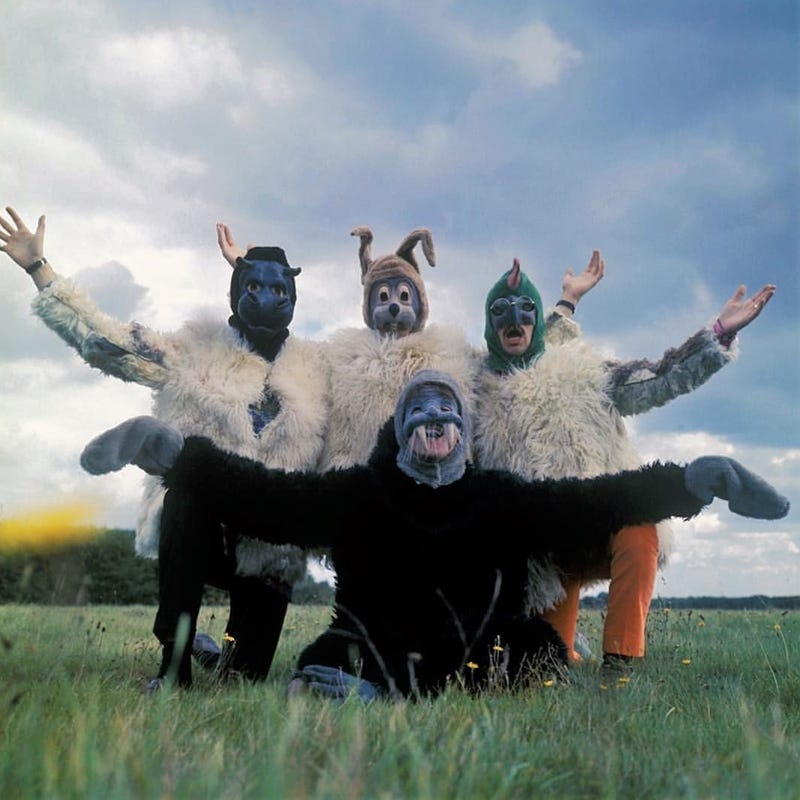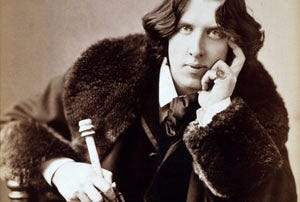Today, April 10, 2025, is the 100th Book Birthday of The Great Gatsby by F. Scott Fitzgerald.
In case you didn’t know, Gatsby is my favourite novel. It is short at about 50,000 words, but it packs in so much story. I’m amazed at how relevant it’s remained. (Some might say it’s more relevant today that ever...) I still read it every few years – as you’re reading this, I’m might be reading it again in celebration of its centenary.
Gatsby is famously known for examining “the American Dream”, even though today’s phrase in capitalized form didn’t exist at the time. I think more accurately Fitzgerald was writing about dreams and aspirations in general – and how those dreams sometimes have a dark side.
Gatsby’s dream of course is embodied as Daisy and symbolized by the green light at the end of her dock. I wouldn’t call Gatsby a love story though. (Some go far to the other side, disturbed by its obsessive, stalkerish vibe. I don’t disagree…) After making his fortune and despite the fact that she is still married, Gatsby wants to pick up where they left off, sweep her off her feet, and carry her to HappilyEverAfterLand.
This sounds nuts to our narrator. “You can’t repeat the past,” Carraway says. “Why, of course you can!” Gatsby replies incredulously.
Yet, Fitzgerald hints that no, you really can’t:
“There must have been moments, even that afternoon, when Daisy tumbled short of his dreams—not through her own fault, but because of the colossal vitality of his illusion… No amount of fire or freshness can challenge what a man will store up in his ghostly heart.”
Fitzgerald is pointing out that our misbeliefs are precisely the Achilles’ heel of any dream. Dreams are illusions that tell us more about ourselves than about reality.
Dreams and illusions and truth and reality have been occupying some middle floors of my mind lately. They figure heavily in my latest WIP. Dreams motivate, but there’s also that dark side I mentioned: they can cloud reality. That human dichotomy interests me. Maybe it’s our tendency to create and believe in illusions that drives us to beat on.
But where’s the line between helpful motivation and hurtful delusion?
Dreams
A couple of weeks ago, I had a conversation with a friend who said her daughter hates The Great Gatsby. This is not unusual. I know many, otherwise sane people who do not care for the book. Not only that, my friend’s daughter doesn’t get why or how anyone could like it at all. I asked my friend to pose the following question to her. At exactly the halfway point of the novel, Gatsby knocks a clock off narrator Nick’s mantelpiece. Gatsby catches it before it falls, and places it back on the shelf. But it leaves Gatsby, Daisy, and Nick strangely shaken, staring at the floor. “I think we all believed for a moment that it had smashed in pieces on the floor,” Nick says.
The question I pose is this: what is Fitzgerald trying to say with this scene?
I’m not sure this question will get my friend’s daughter to appreciate the book any more than she does now. But if there is any hope, this might be it. Because considering and deciphering strange events like these in the novel opens you up to the real magic of Gatsby between the lines. This scene isn’t meant to show Gatsby as clumsy. It’s designed to show that this book is about time (the clock) and illusion (the clock, broken) and self-beliefs (what a happy afternoon get-together we’re having!), and how all our individual beliefs collide with those of others, and how reality isn’t always what we make it to be in our heads.
(It’s also an ingenious way to convey the deep uncomfortableness that sometimes comes with meeting an old friend at the moment you realize that time has moved on from this relationship… A few short, bewildering lines that shout, “Awkward!”)
The Medium is the Message
Fitzgerald wasn’t the first to write about dreams. And he certainly wasn’t the last. Books, music, movies, maybe art in general are about dreams. What do you want? What will you do to get it?
There are a million different takes – and not all descriptions of dreams move in expected directions. The ones interest me most are the metaphysical ones that twist into themselves.
Consider for example, how John Lennon’s rant against dreams in his song God is a fulfilment of a dream in itself:
I don’t believe in Beatles.
I just believe in me. Yoko and me. That’s reality.
The dream is over. What can I say?
Yesterday, I was the dreamweaver…
I was The Walrus. But now I'm John… The dream is over.
One way these lyrics twist is that clearly Lennon is talking about your dream being over, not his own. Especially those desperate to see the Beatles get back together. Their dreams end while his new dream with Yoko begins. Another twist: Lennon also acknowledges that although he was the dreamweaver who helped perpetuate myths, now it’s time to move on.
Joan Didion’s take on dreams and illusions resonates with me as well. She makes a more direct connection with our psyche talking about “stories” instead of illusions.
“We tell ourselves stories in order to live… We look for the sermon in the suicide, for the social or moral lesson in the murder of five. We interpret what we see, select the most workable of the multiple choices.”
In other words, we look for patterns that reinforce in our brains what we already know. That’s called confirmation bias, in case you’re wondering. We need reasons for when good and bad things happen. We need to tell ourselves stories and live under illusions because we cannot live in a senseless world. The words “justification” (a reason) and “justice” come from the same base Greek word. Order is just. Disorder – random shit that happens – is unjust. We need to believe this in order to survive.
Didion has a special message for writers:
We live entirely, especially if we are writers, by the imposition of a narrative line upon disparate images, by the ‘ideas’ with which we have learned to freeze the shifting phantasmagoria which is our actual experience.
By using those cold parentheses, she relegates even our own ideas to the bucket marked delusional. Trust no one, not even yourself. Writers are equally susceptible to connecting dots with lines that don’t really exist. Maybe more so. Constellations of “truth” are merely illusions created and drawn by our own minds.
What Does It Mean?
To be honest, I don’t have a point to make. It’s been fun musing out loud, inspired by a book that is now a hundred years old.
Though I suppose if I were to connect my own dots, they would lead to this: that understanding your characters’ beliefs, misbeliefs, dreams, and illusions helps drive your story, whatever it is. This is one of the things I’m learning (the very hard way) in my own WIP.
This is true of non-fiction as well as fiction, and quite possibly poetry, too. What does the narrator want from life? Why tell this story or poem? Why now?
A person on the coast sees ocean. A person in the desert sees sand. These two states of being make a world of difference in each person’s perspective – and there are many other states at any given moment. Unlocking specific world views and specific moments, real or illusionary, helps you understand the time and place of your characters and viewpoints.
Over to You: What Does It Mean to You?
Do you like The Great Gatsby? Do you hate it? Do you think it’s about the American Dream… or something else? What’s in your (or your MC’s) ghostly heart? Comment below, and let us know.
A bit of housekeeping: I will be going on hiatus for about a month. I’ve hit a particularly busy period in and out of work, so unfortunately I need to put this aside for a little bit. In the hilarious words of Arnold Schwarzenegger, I will be back.
Lastly, I’ve included John Lennon’s God in the video below.
Until next time… keep writing with wild abandon!
~Graham
email me if you get lost.






